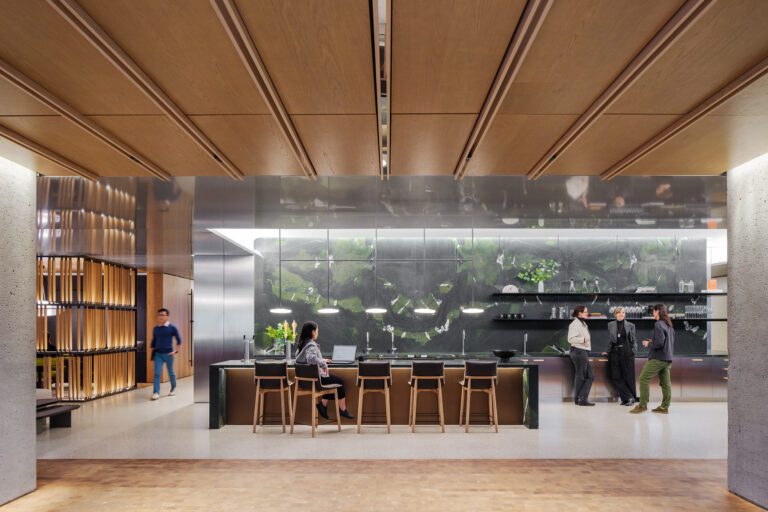Sustainable building materials are in high demand.
Many consumers and builders are interested in moving away from steel, concrete, and other materials that carry heavy carbon footprints and come from non-renewable sources.
Meanwhile, plenty of exciting innovations promise to create a more dynamic and sustainable future for the building and construction industries. Products like hemp concrete and mycelium-based brick aren’t mainstream yet, but they might be soon.
Of course, when it comes to the combination of sustainability and functionality, nothing will ever displace high-quality wood.
When produced in accordance with the highest sustainability standards, wood is a renewable resource that performs like no other material can.
If you’re considering sustainable wood paneling for your next interior design project, you have a number of excellent woods to choose from. The best sustainable woods are produced responsibly, priced affordably, and outperform other materials in terms of durability, aesthetics, and acoustics.
Here are a few key benefits of sustainable wood paneling.
1: Sustainable Wood Purchases Support Responsible Forest Management
Sustainable timber production involves balancing the growth rate of a forest against the periodic removal of some trees. When managed properly, a timber forest yields harvestable trees continuously while simultaneously functioning as a viable forest that sequesters carbon and provides wildlife habitat.
To encourage businesses and consumers to purchase sustainably-produced wood, a market-based certification program is used. The leading certifier is the Forest Stewardship Council (FSC), an international non-profit.
Currently, an FSC certification is the strongest and most trustworthy sustainability distinction that a piece of wood can carry. When you purchase FSC-certified wood, you know that the source forest is monitored and controlled in accordance with the highest standards for renewable production.
2: Sustainable Wood Is More Affordable Than Rare or Exotic Wood
When a product is labeled as rare or exotic, that’s often considered a selling point. However, when it comes to resources like lumber, rare or exotic status is often more of a red flag.
Harvesting rare woods for lumber may be harmful to the well-being of the species as a whole. When a lumber harvest occurs without proper management or certification, entire habitats may be harmed during the process, creating permanent scars on a landscape.
The fact is, many of the most useful woods that occur in nature have been embraced by the timber industry and turned into the most widely-available species—and that’s a good thing!
Sustainable woods are the ones that are populous, widespread, and easy to source. Such woods, such as oak, beech, and walnut, are more affordable for builders and manufacturers to purchase and turn into products such as wall panels.
Fortunately for consumers, the selection of sustainable wood species is diverse. There’s a beautiful, high-performing wood to form the perfect match for any interior space.
3: Sustainable Woods Are Durable and Low-Maintenance
The most popular tree species for woodworking and construction include:
- Oak
- Walnut
- Maple
- Beech
- Cherry
- Ash
These trees produce wood that’s easy to work with, durable, and offers fantastic aesthetic qualities, such as brilliant colors and gorgeous grain lines. High quality means less time spent post-purchase on maintaining the surfaces. High-quality woods are also less susceptible to damage from temperature or humidity fluctuations.
Each of these favored species is grown in abundance using sustainable practices. Thus, the best woods are also the most available via sustainable sourcing.
4: Sustainable Woods Are Versatile and Attractive
Sustainably-sourced species such as cherry, oak, and walnut are considered some of the most beautiful and adaptable options for woodworking and building.
These woods are easy to work with and can be shaped along curves or around fixtures in smooth, continuous designs.
Regarding acoustics, wood is porous and able to absorb sound waves. As a result, rooms with wood panels have warmer, more localized tones and a more pleasant overall acoustic quality.
Best of all, wood is beautiful. From the vibrant reds of cherry to the dark chocolate browns of walnut, wood comes in an incredible variety of hues and patterns. Combined with expert finishing and design work, high-quality wood can be molded to perfectly meet the interior design goals for any project.
Get Sustainably Sourced Wood Panels for Your Commercial Space
At Rulon International, we offer customized wood panel solutions that dramatically enhance the appearance of commercial spaces.
Sustainability is a pillar of our business. We can contribute a variety of credits to your project, including LEED, Living Building Challenge, and The WELL Building Standard.
To learn more, view our project gallery or contact our team today.




